How to overcome poor content homogenization
What is the essence of homogenization?
Homogenization refers to the process by which things or systems become more and more similar and tend to be consistent. You may have heard of a word called entropy increase, which refers to this problem. Entropy increase is the core concept of the Second Law of Thermodynamics, which refers to the trend of increasing disorder within a closed system over time.

The homogenization of content may lead to an increase in information entropy (entropy increase). When a large number of websites provide similar content, although the information of individual websites may become more certain and predictable, from the perspective of the entire Internet ecosystem, useful information becomes more difficult to obtain, and the overall entropy of the system may increase. This is why search engine algorithms encourage originality and diversity to reduce the negative impact of homogenization. Of course, extremes will backfire. In content creation, it is necessary to maintain a certain degree of consistency (to meet user expectations and search engine requirements). However, if we purely pursue uniqueness, it will also make it difficult for search engines to "understand your content". Therefore, we need to find a balance between consistency (homogeneity) and providing unique value (specialization).
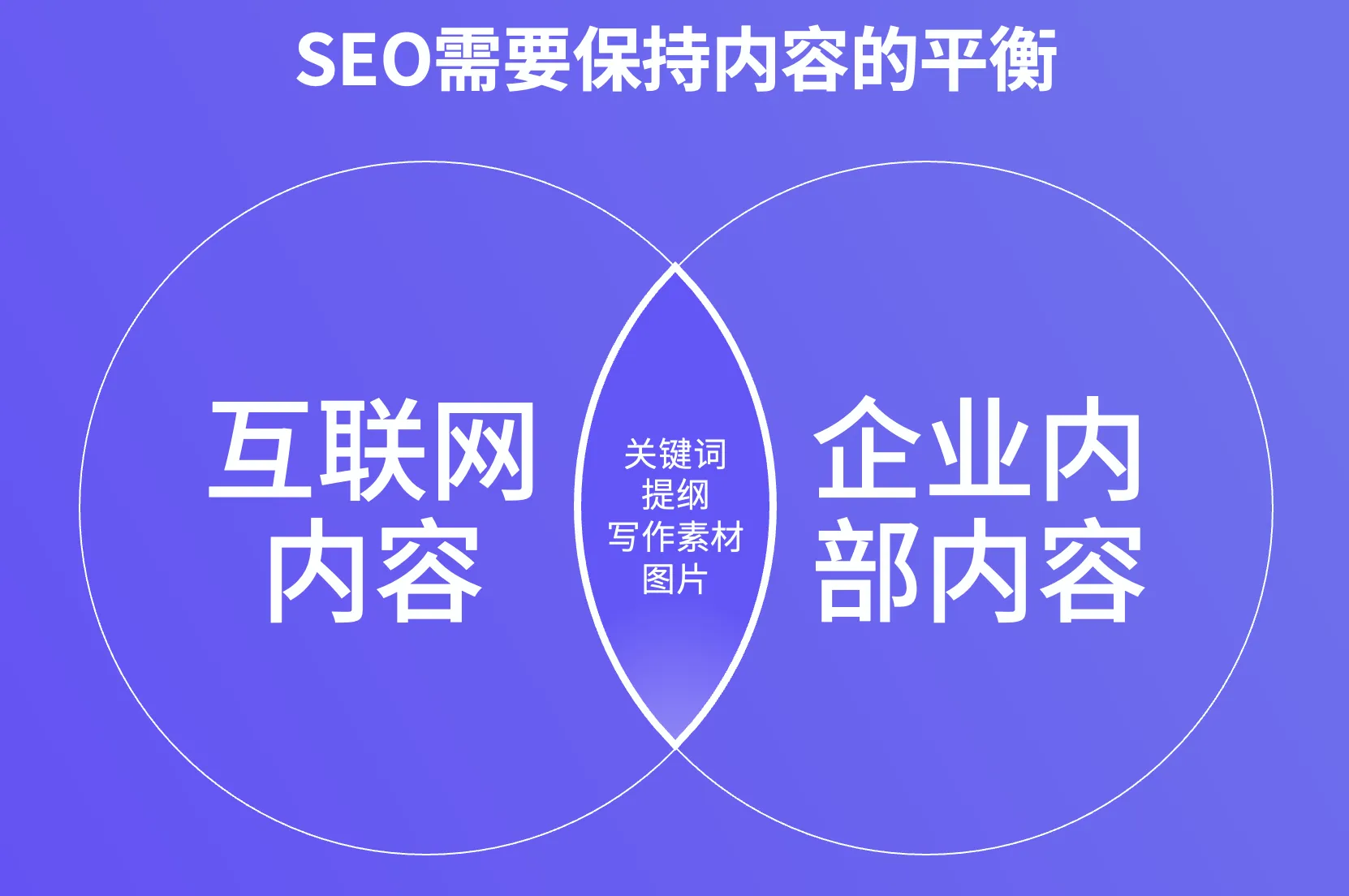
How to optimize content generation in the AI era
The characteristics of homogeneous content in SEO optimization mainly include keyword stuffing, content templating, information repetition, lack of in-depth analysis, mismatch between titles and content, excessive reliance on popular topics, abuse of external and internal links, and low content update frequency. These characteristics not only affect User Experience, but may also lead to a decline in search engine rankings. In the AI era, due to the great improvement of efficiency, the trend of homogenization is becoming more and more intense. We cannot abuse AI, but can better interact with AI, "teach" AI to produce "differentiated" content, rather than "create" more garbage. We have found some methods:
Integrate personalized content
AI technology can analyze users' behavior, preferences, and context to generate highly personalized content. This includes not only recommending content based on users' interests, but also dynamically adjusting the presentation of content. For example, news applications can use AI to customize news summaries in real time based on users' reading habits and interests, or e-commerce platforms can generate unique product descriptions for each user, highlighting the characteristics they are most likely to be interested in. This personalization can increase the relevance and diversity of content and reduce the homogeneity felt by users.
| Personal experience will play an increasingly important role in content creation. In this regard, AI is powerless and can only provide convenient tools to help authors integrate personal experience into content. |
|---|
Integration of original content
With the continuous advancement of AI technology, researchers are working hard to improve AI models and algorithms to enhance the originality and uniqueness of generated content. For example, some research is dedicated to developing AI models that can generate novel metaphors and analogies, or systems that can create new vocabulary. These advances can help AI generate more unique and creative content, reducing the problem of homogenization.
| Tips: There is a lot of original and unique content within the company, and it is very important to integrate this content into writing. |
|---|
Integrating cross-disciplinary content
AI can help integrate knowledge from different fields and create novel interdisciplinary content. By analyzing a large amount of data and literature from different disciplines, AI can discover potential connections between different fields and propose innovative research directions or content themes. For example, AI may discover certain connections between medical research and environmental science, inspiring creators to produce new health and environmental-related content. This cross-disciplinary integration can greatly increase the diversity and innovation of content.
| High-quality articles that integrate history and others can further enhance |
|---|
Integrated Creative Assistance
AI can serve as a powerful creative aid tool to help content creators break through their thinking limitations and generate new ideas and perspectives. For example, AI can analyze large amounts of data and content to propose unique connections or perspectives that humans may overlook. Writing aids can provide word suggestions, sentence reconstructions, and even plot development suggestions to stimulate authors' creativity. This human-machine collaboration can produce more novel and diverse content.
| AI tools can generate a lot of creativity, such as images, sounds, and videos, which are also personalized content |
|---|
How QuickCreator combats homogenization in the generation process
Personalization of Title Generation
QuickCreator has three methods to help customers generate better content:
- It will search on the Internet according to the customer's keywords and topics, analyze the existing high-quality content, and then generate the title.
- Quick allows customers to have fine control and generate better content
- Finally, QuickCreator will intelligently determine whether the currently generated Title is duplicate based on the historical content. As shown in the following figure:
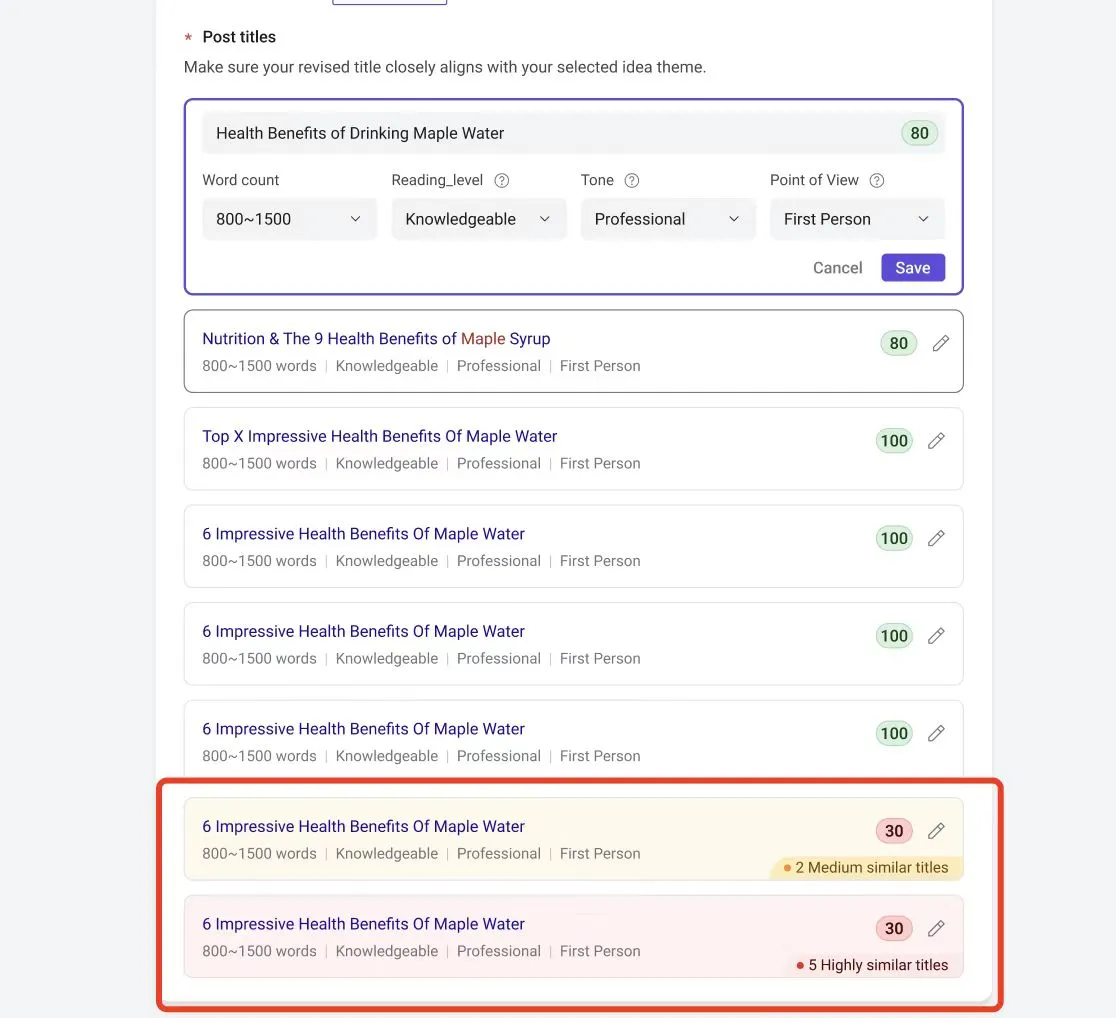
Integration of original enterprise content
QuickCreator recommends users/customers to upload internal materials, form a Knowledge Base , and integrate internal materials into the writing process. In this way, it can greatly reduce the AI component, have personalized content, of course, no worries about inclusion, no worries about high ranking.
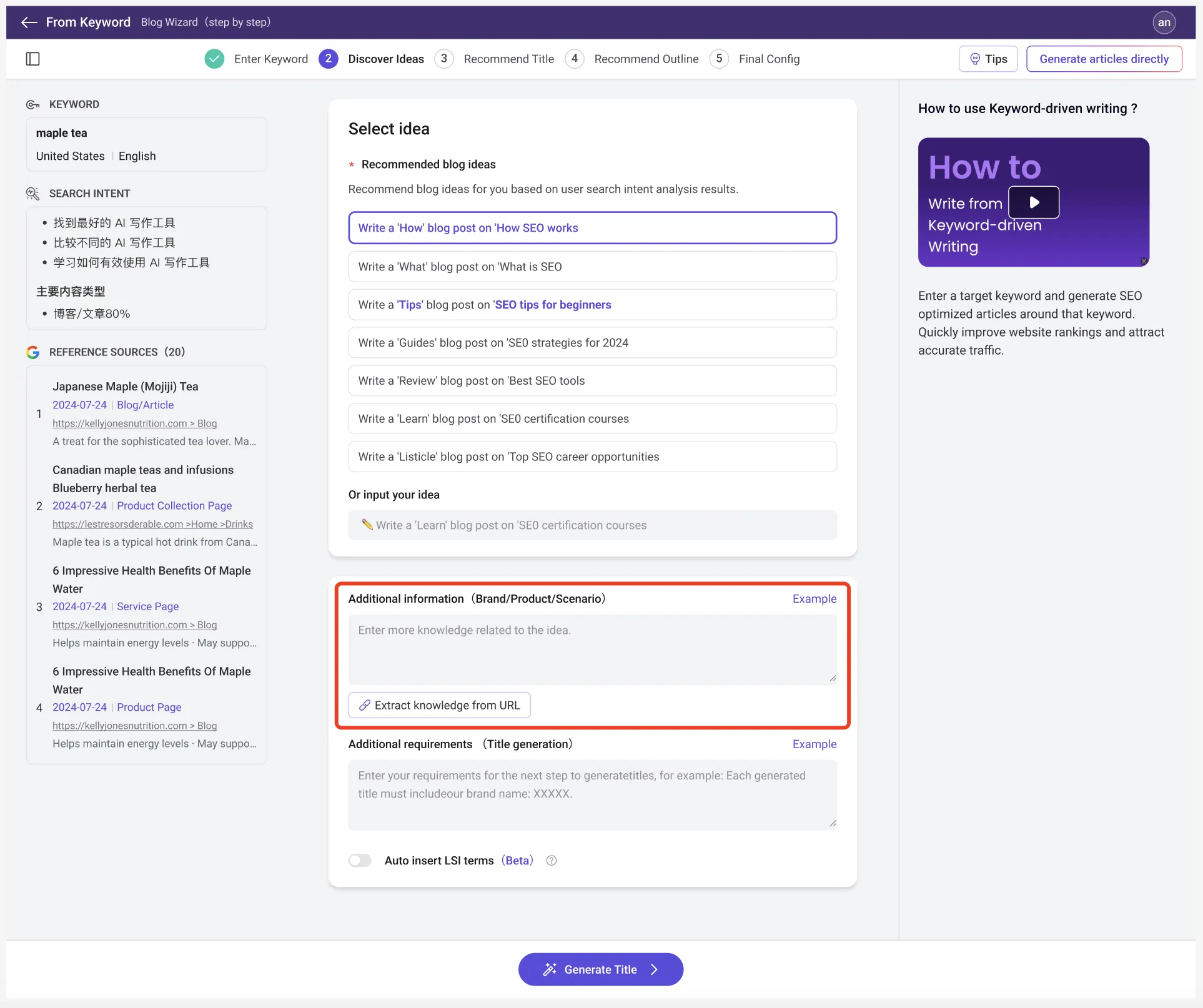
The following image is written by one of our flagship customers:
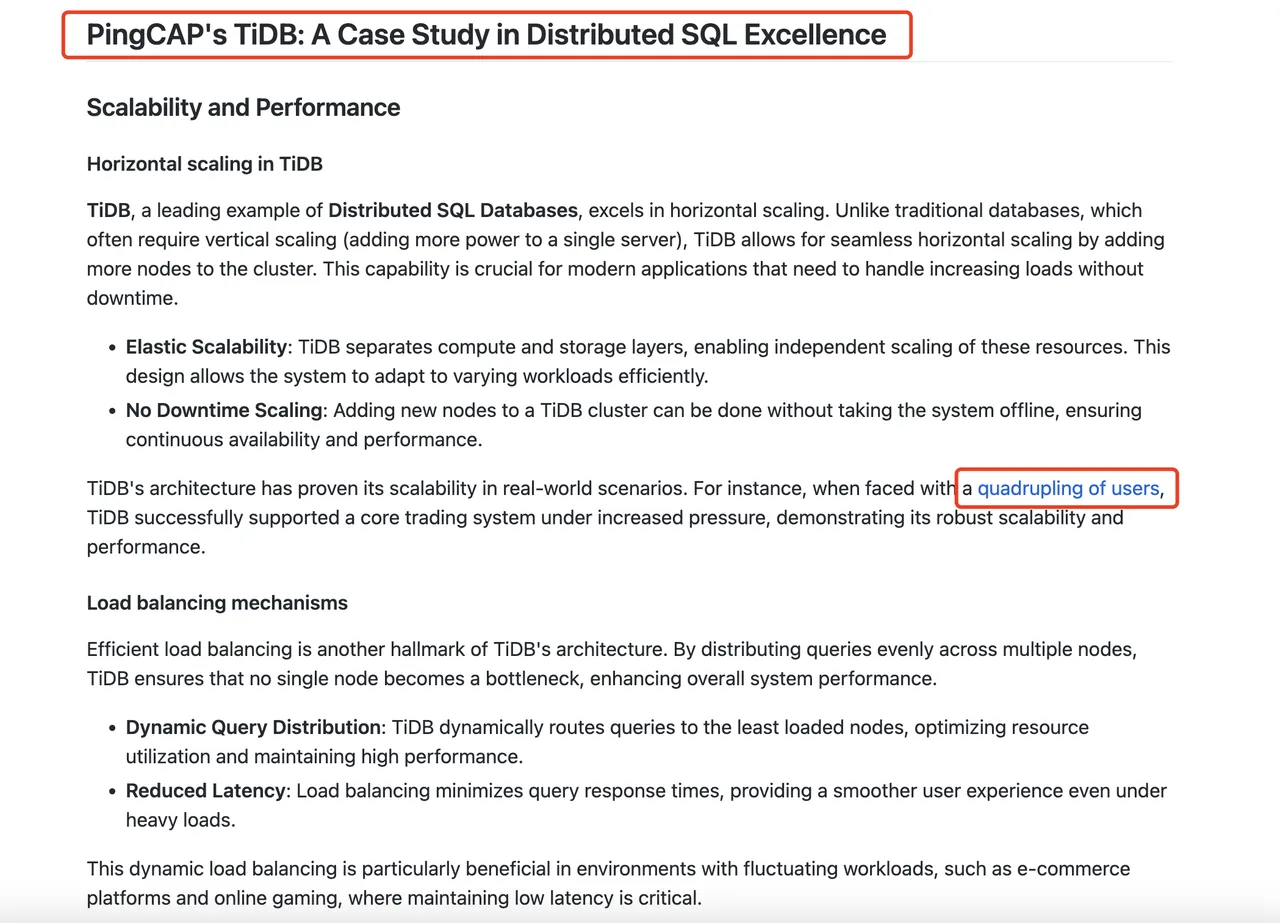
Diversification of Writing Outlines
Writing outline is the core of AI creation. QuickCreator will understand the competitive situation of keywords, capture high-quality online articles in real time, learn the structure of competing products, analyze writing intentions and styles, and recommend suitable outlines (which can be generated to H3).
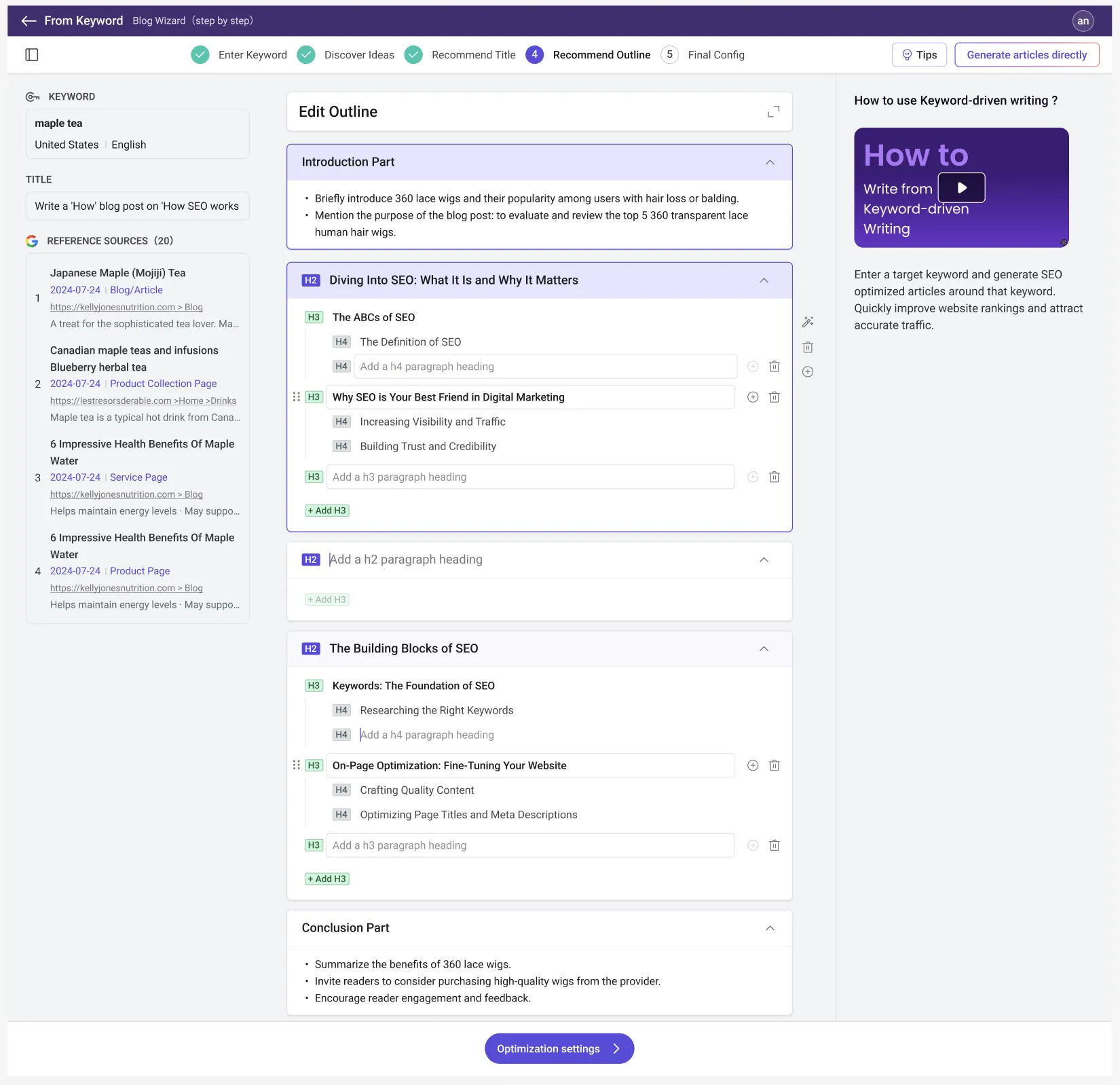
In addition, users/clients can also enter specific requirements to control outline generation.
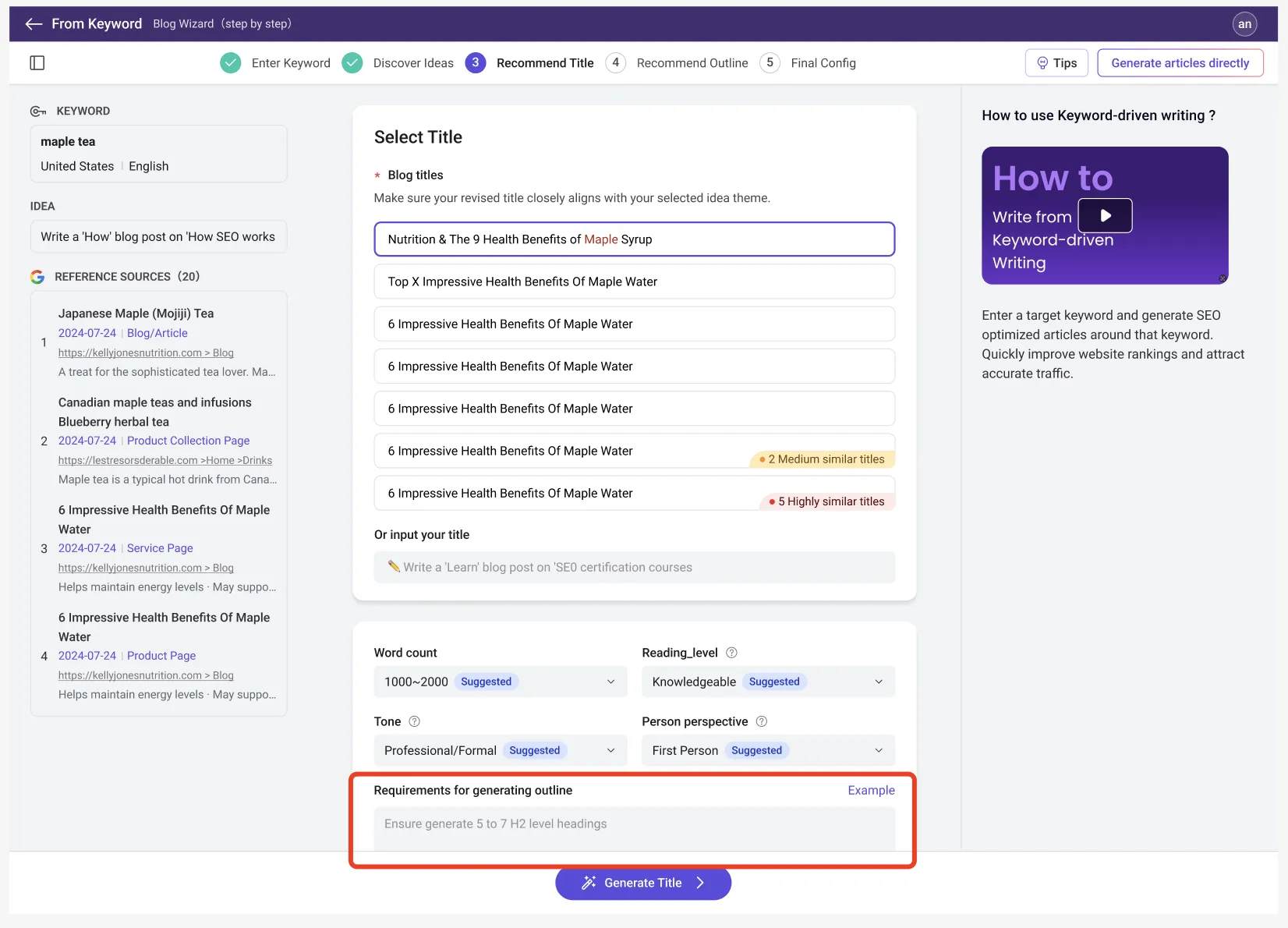
Cross-domain content integration
We know that a good article is not entirely composed of its own content. Each paragraph and viewpoint may require reference content/factual materials for polishing/strengthening. QuickCreator's unique technology will analyze the content of the "paragraph" in real time during the writing process, and search for supporting materials (Fact/Evidence) from the Internet/internal Knowledge Base to enhance the credibility of the article.
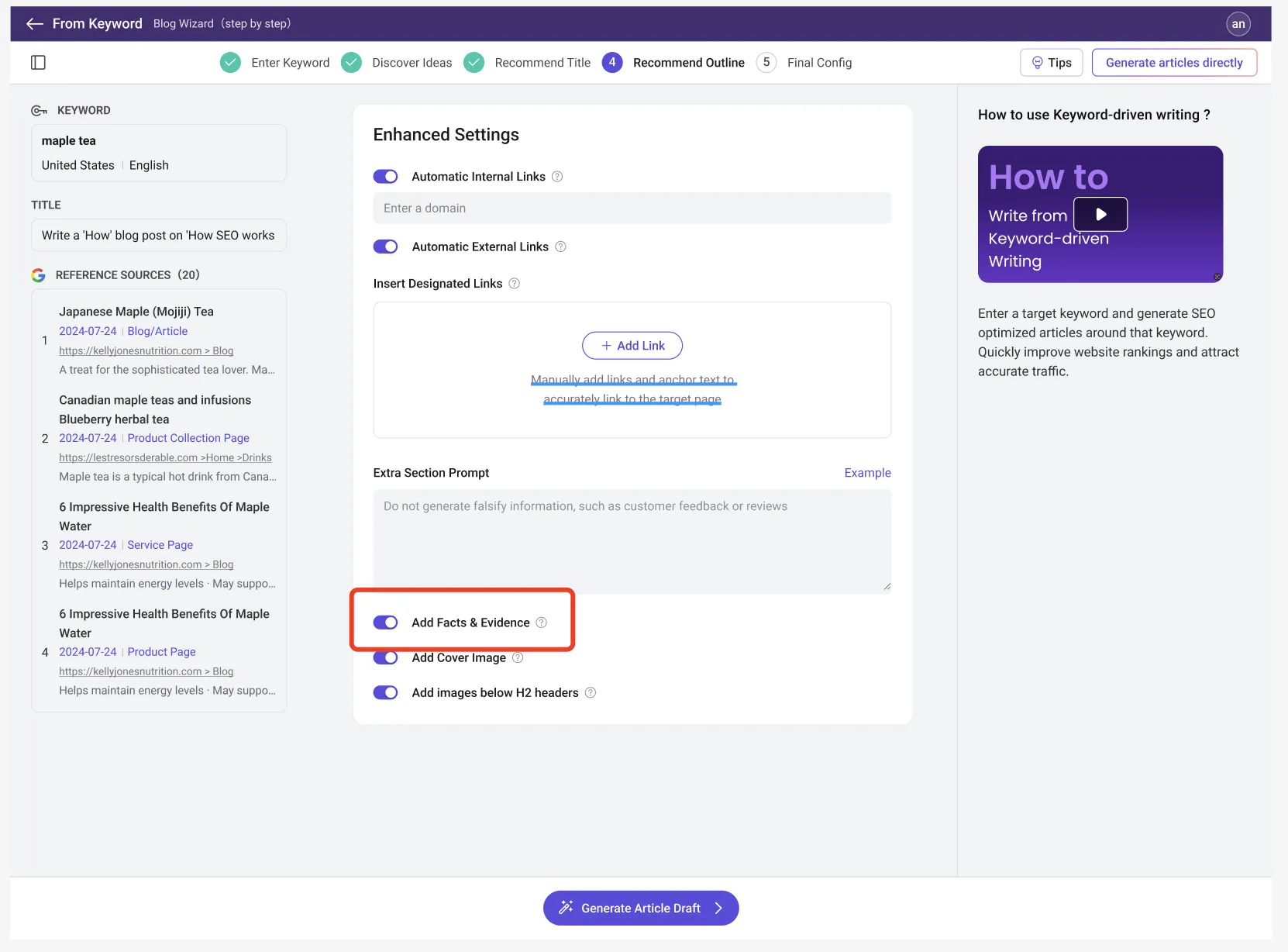
The switch in the above picture "must" be turned on! Only in this way can we get the "high-quality" final content. The form is roughly like this:
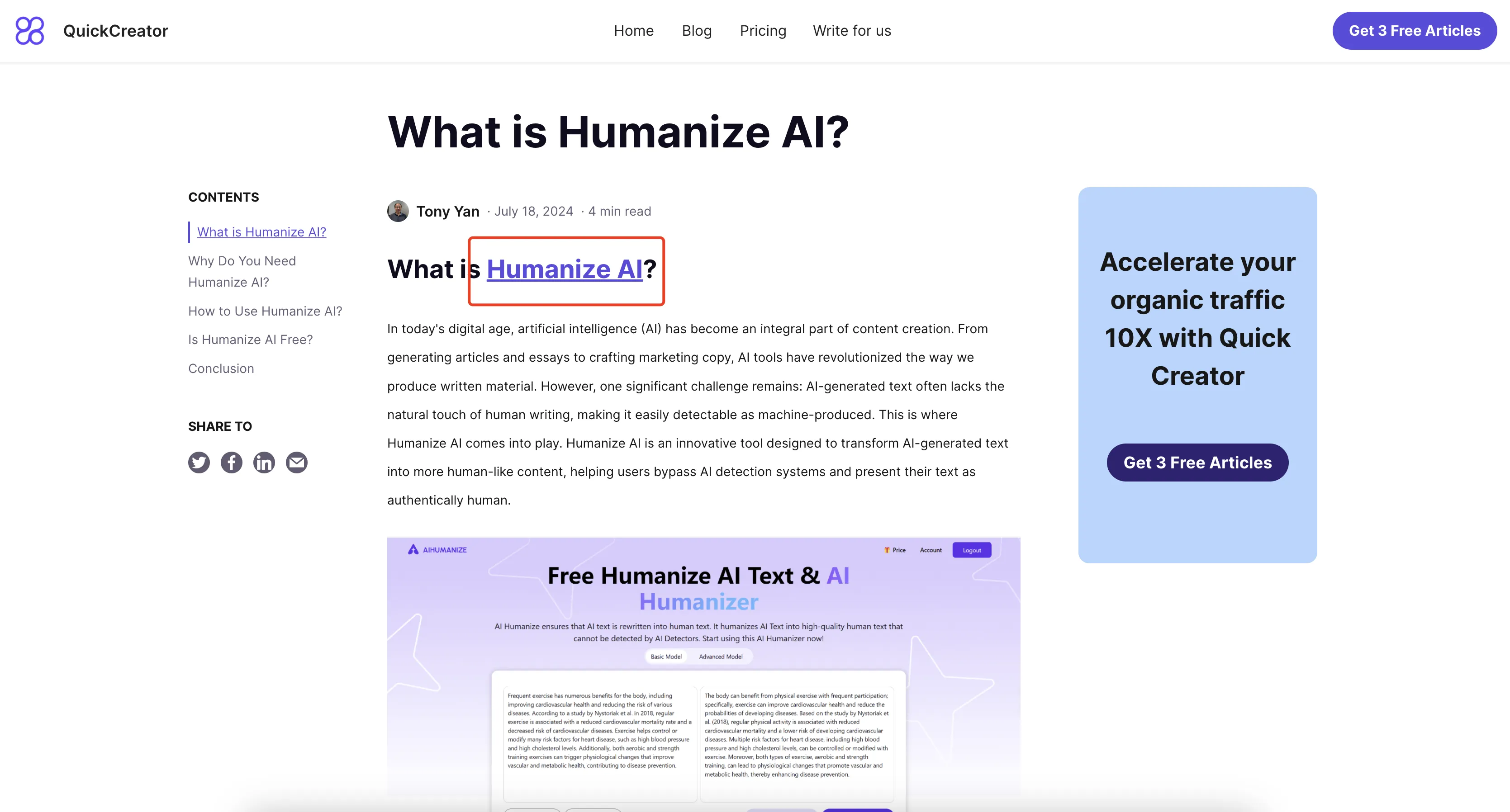
Among them, this " Humanize AI? " will be guided to a "high-weight" supportive content.
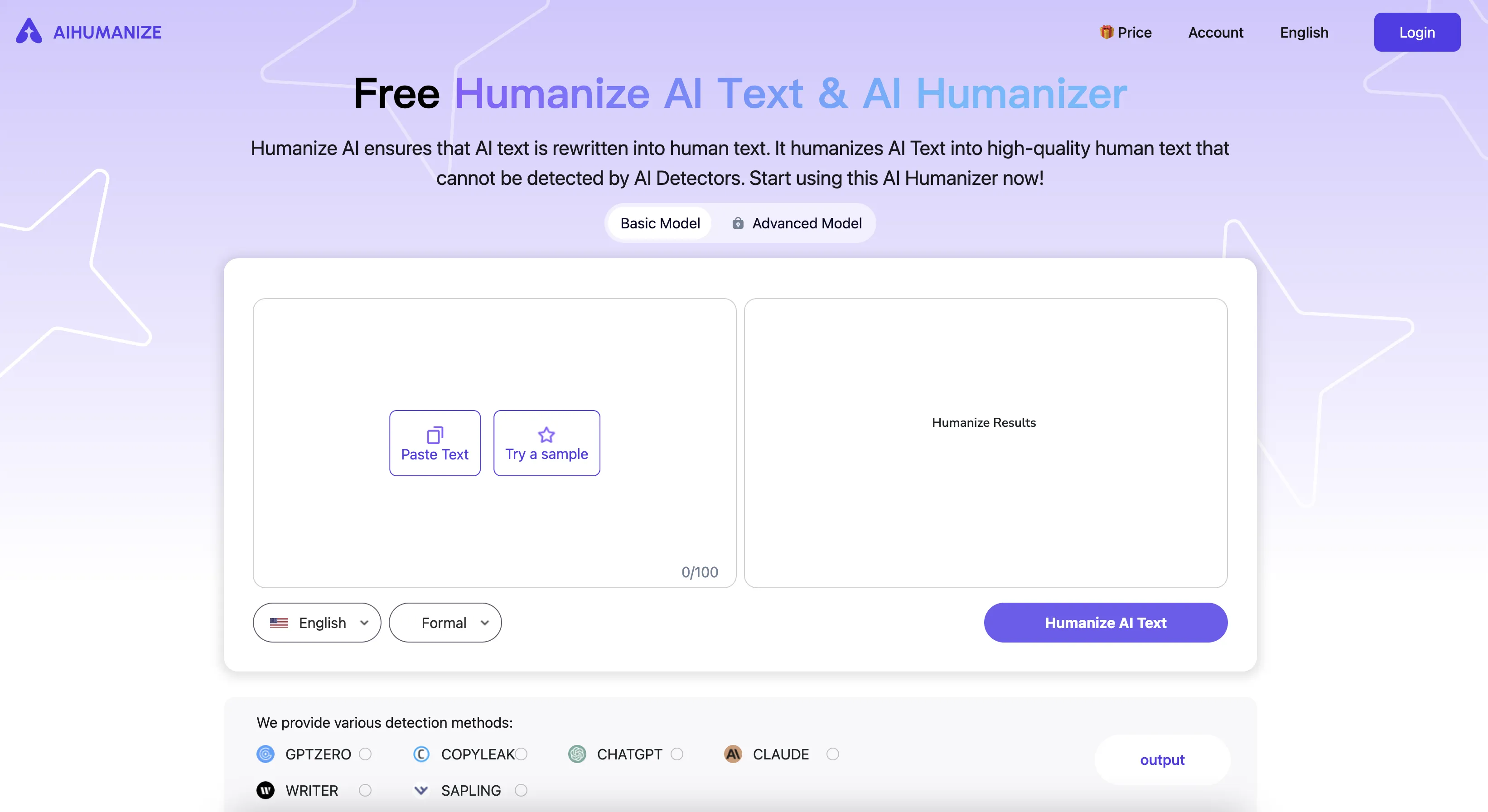
Internal chain/chain optimization
We all know that internal links can help search engines better understand the structure and content hierarchy of a website, making the information structure of the website clearer. Reasonable external links can provide users with additional valuable information, enhance the credibility and authority of the content. Through these links to other high-quality and relevant websites, industry relationships can be established, and the website's position in the industry can be improved. QuickCreator can help users/customers automatically embed internal/external links in their content. If customers have specific requirements, they can also notify AI in the settings window.
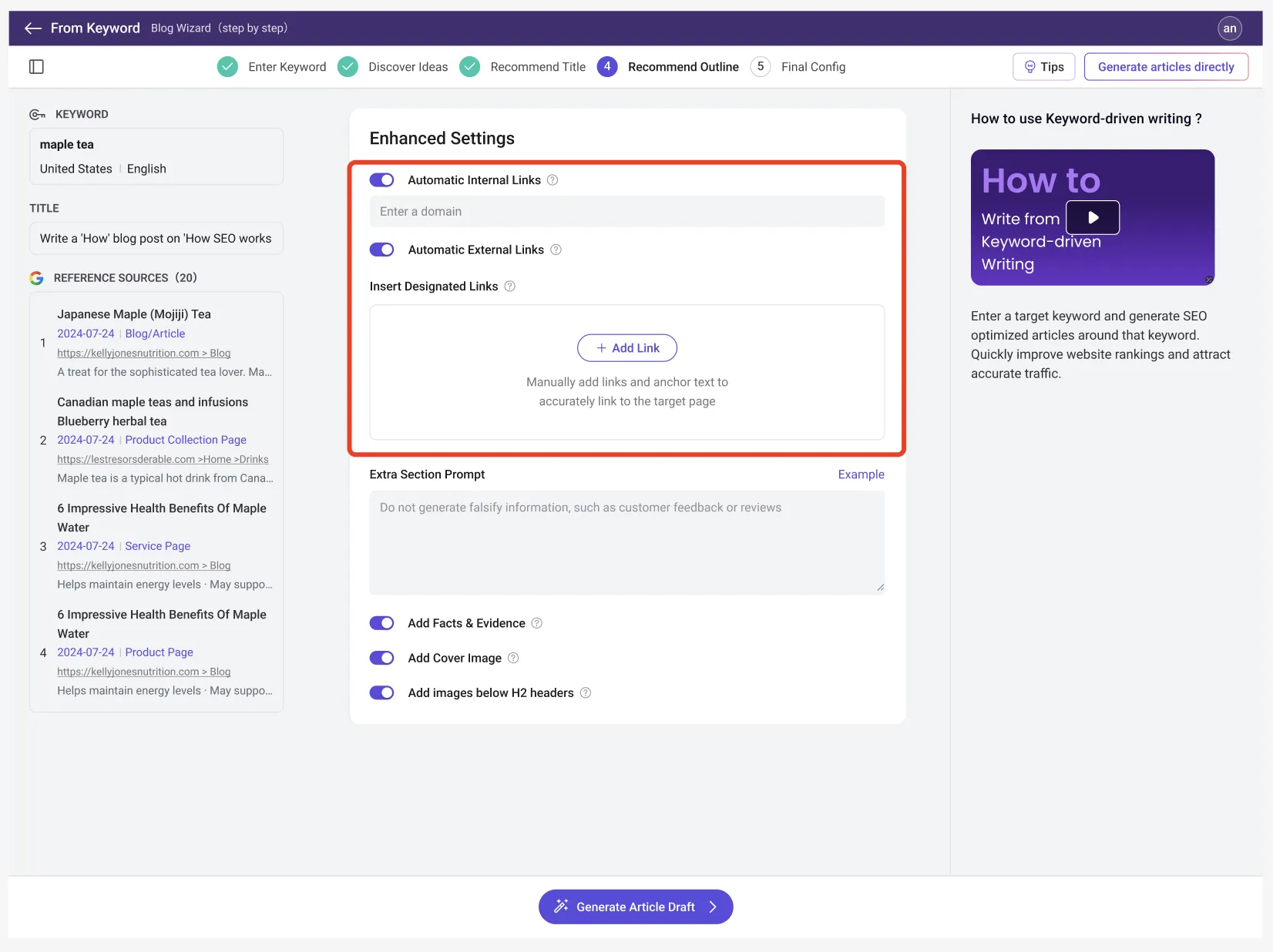
ssistance in finding images and creative images (in preparation...)
High-quality images can enhance the readability and attractiveness of content, improve user reading experience and dwell time, and indirectly improve SEO effectiveness. In addition, by optimizing image file names, alt text, etc., images can rank higher in image search results, bringing additional traffic to the website. However, finding images is a troublesome task. Fortunately, there are many websites on the Internet that share "free and copyright-free" images. QuickCreator integrates them and can automatically insert them during the generation process.
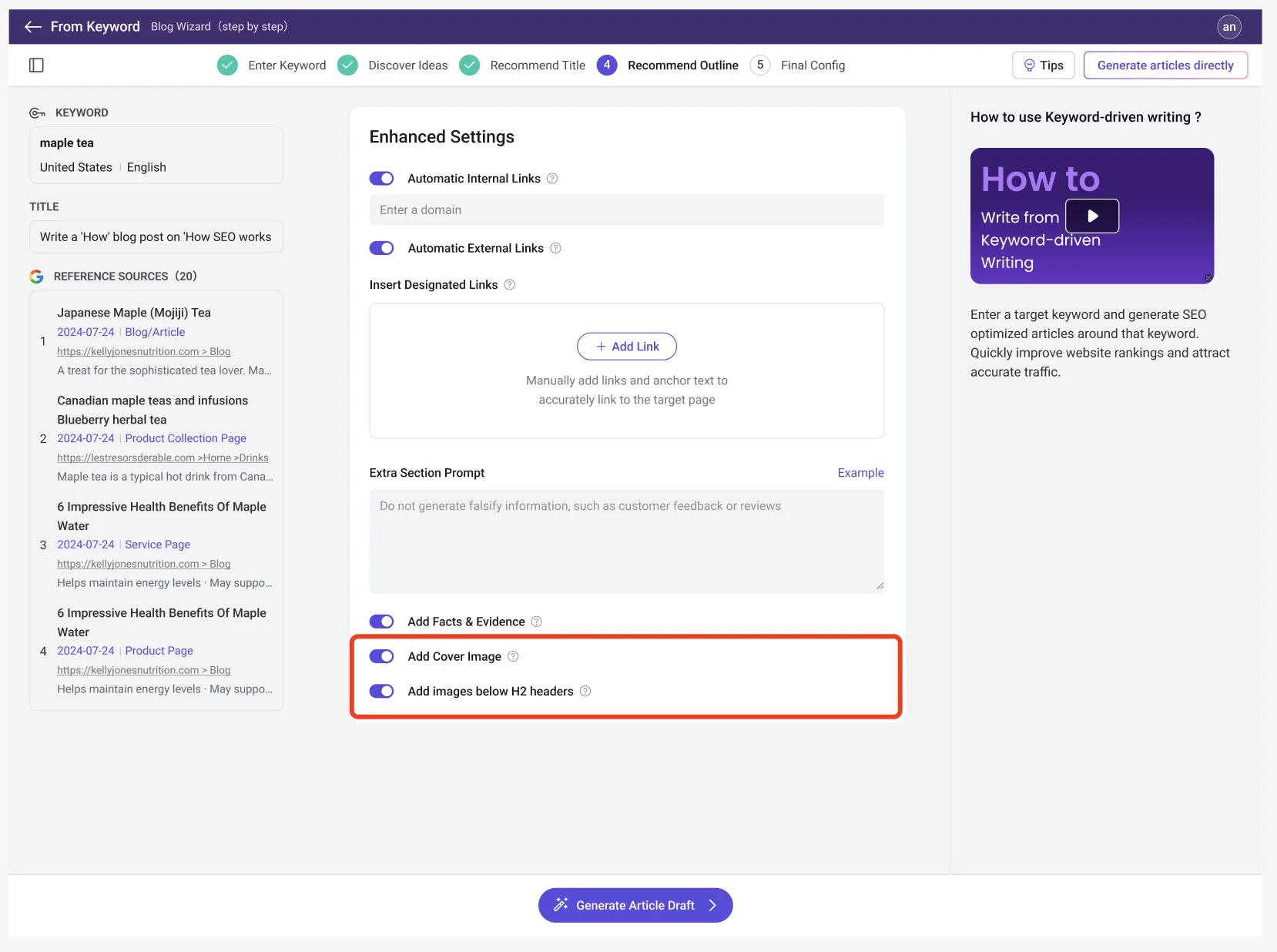
Differentiated content = excellent SEO results
Compared with other paid copy writer tools, QuickCreator's generation logic is definitely not fast, but its core goal is to create "high-quality, differentiated" content. The generation of an article takes about a few minutes to ten minutes. These contents still need to pass two checkpoints for verification.
AI detection tool
| undectable.ai It is an artificial intelligence detection tool, mainly used to detect whether the text is generated by AI.
- Was it written by a human?
- Is there any suspicion of plagiarism? | | --- |
This is an article my partner just made, what-is-humanize-ai , put into this tool to test the results as follows:
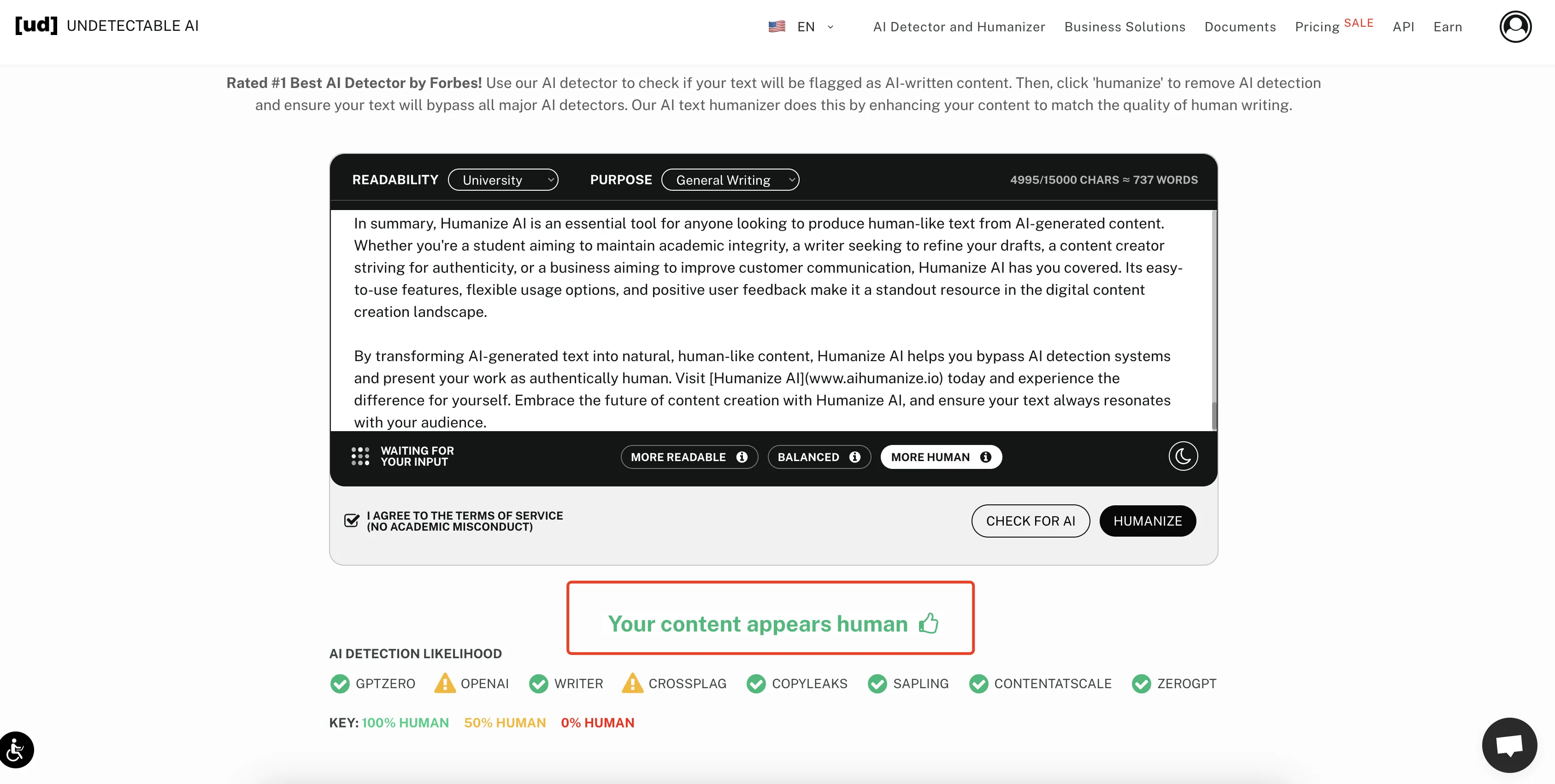
Indexed by Google
| After AI detection, it is only the first hurdle. The real test is whether Google has indexed it |
|---|
The following chart shows the data of one of our customers who has been using our product since May, with a collection rate of around 95%.
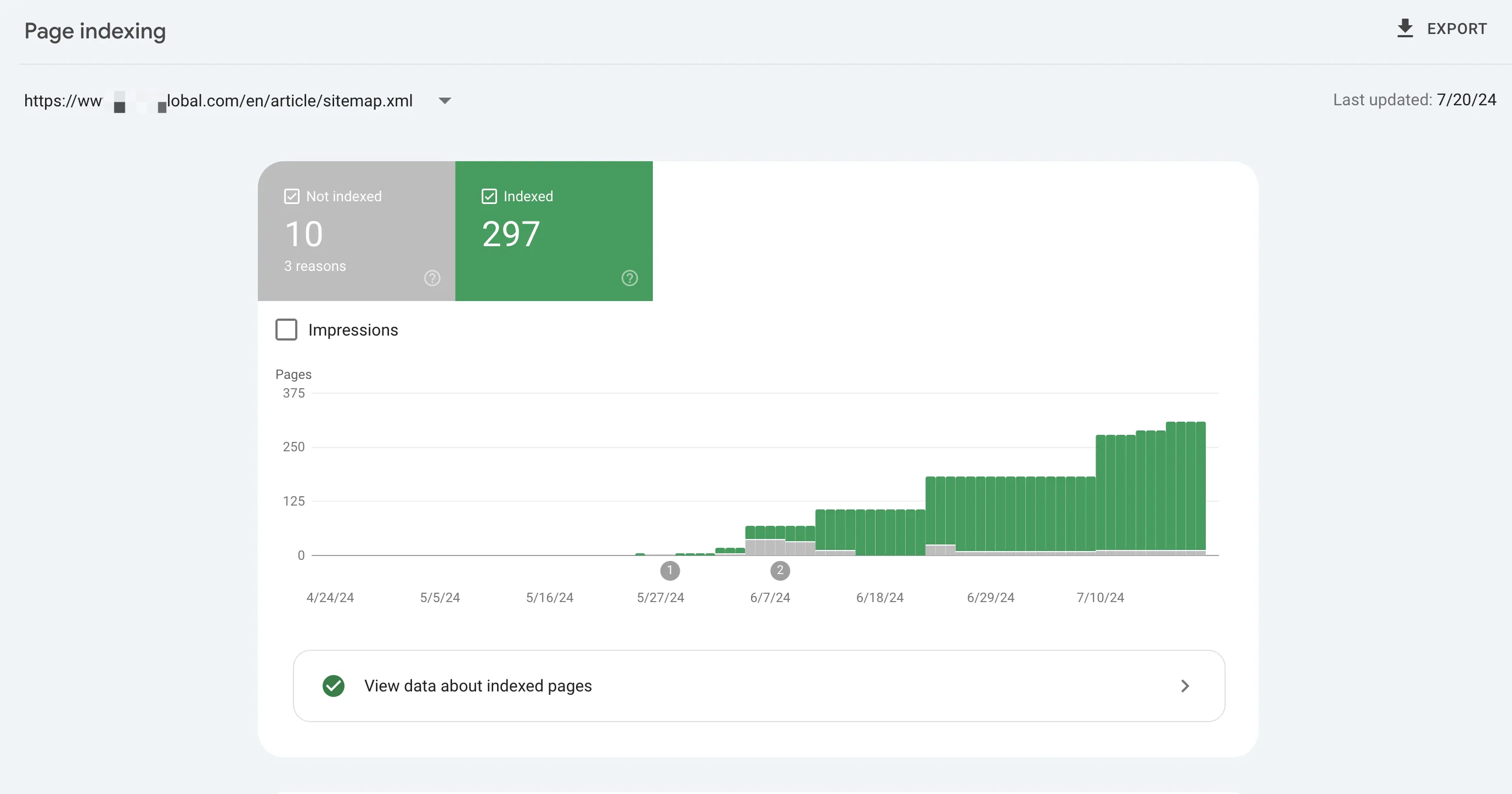
The increase in traffic to their website is also very obvious.
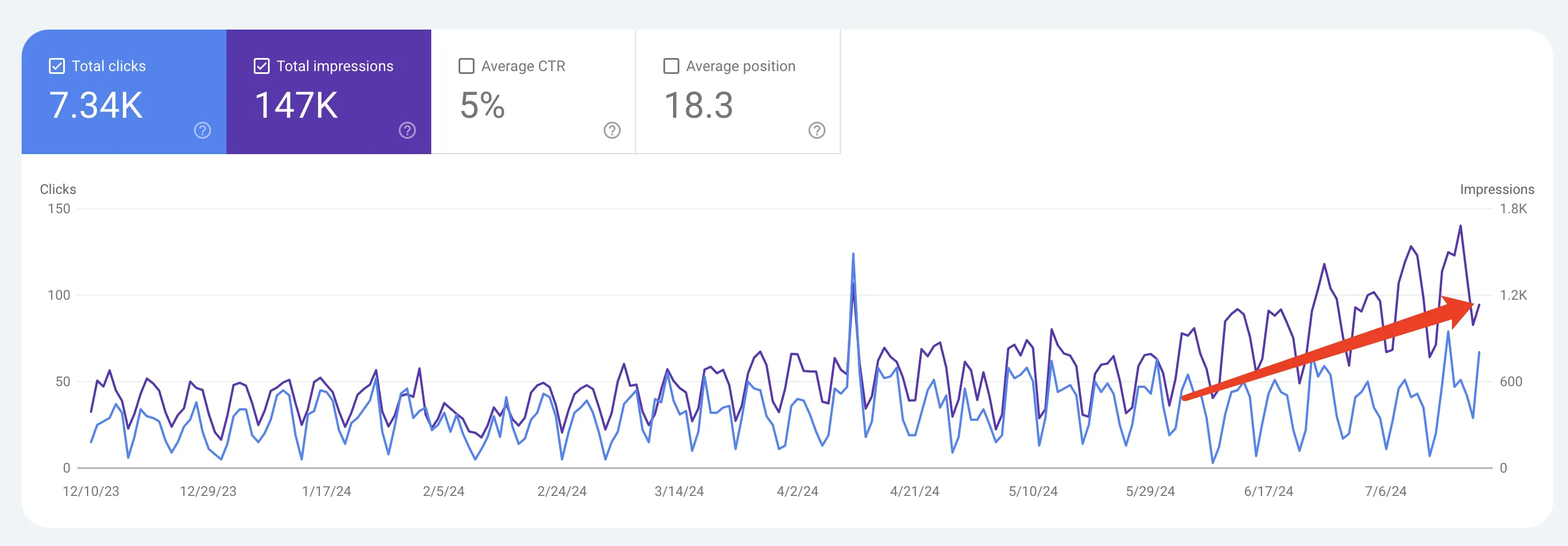
Summary
The homogenization of content in the AI era is a complex problem that requires the joint efforts of technology developers, content creators, platforms, and users to solve. By making reasonable use of AI technology, valuing human creativity, optimizing algorithms, improving diversity awareness, and continuous innovation, we may create a richer, more diverse, and valuable content ecosystem. This can not only improve User Experience, but also promote the dissemination of knowledge and the exchange of ideas. QuickCreator will always be with customers, with the sole goal of creating truly valuable content, allowing readers to obtain the most valuable content!